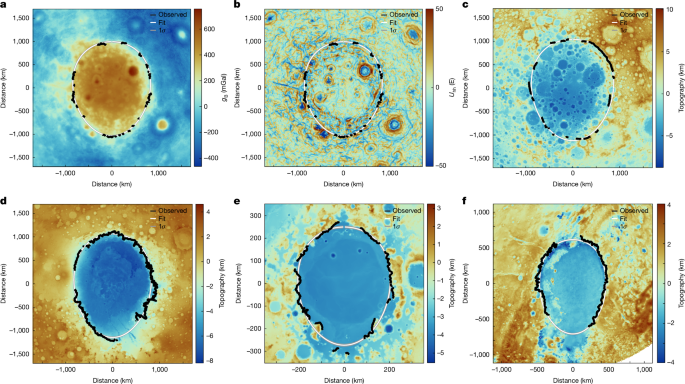
"The age of the SPA basin has been estimated at 4.25 Ga based on a near-side sample14 or 4.33 Ga based on a lunar meteorite15, whereas crater retention model ages of 4.31 Ga (ref. 16) or 4.33-4.39 Ga (ref. 17) depend on the uncertain early bombardment history. Thus, important questions remain about the age of the basin, the timing and nature of magma ocean crystallization and the relation between these two pivotal events in early lunar evolution."
"the final outcome of magma ocean crystallization and the associated overturn of the cumulate mantle was the concentration of both ilmenite-bearing cumulates and KREEP on the near side in the Procellarum KREEP Terrane (PKT) by approximately 4.34-4.37 Ga (refs. 9,10). The composition of the SPA basin floor suggests a mantle-excavating impact before the overturn of the buoyantly unstable post-magma ocean cumulates11,12, whereas increased concentrations of titanium and thorium within the basin13 suggest that the impact excavated into an ilmenite-rich and KREEP-rich reservoir11."
The SPA basin-forming impact occurred during a stage when the Moon was subjected to heavy bombardment and possibly still crystallizing its global magma ocean. Crystallization produced a cumulate mantle with an inverted density profile, forming dense, titanium-rich, ilmenite-bearing cumulates and a final KREEP-enriched liquid including thorium. Ilmenite-bearing cumulates and KREEP were concentrated on the near side in the Procellarum KREEP Terrane by about 4.34–4.37 Ga. The SPA basin floor composition indicates a mantle-excavating impact before cumulate overturn, and enhanced titanium and thorium point to excavation into an ilmenite- and KREEP-rich reservoir. Estimated SPA ages range from about 4.25 to 4.39 Ga. The basin exhibits a quasi-elliptical shape.
Read at Nature
Unable to calculate read time
Collection
[
|
...
]